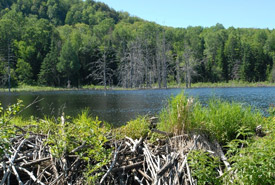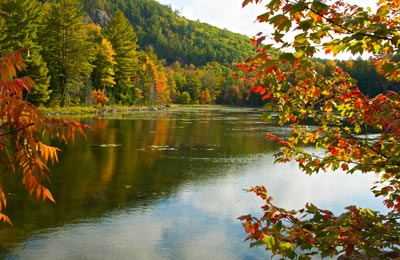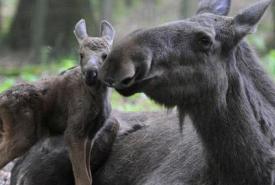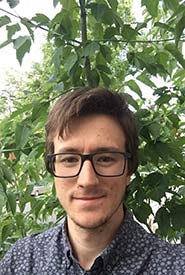Nature Destinations: Alfred-Kelly Nature Reserve

Alfred-Kelly Nature Reserve, QC (Photo by NCC)
The Alfred-Kelly nature reserve is an oasis within an area where residential development is rapidly increasing. The nature reserve is named for an ornithologist who, in 1983, donated his property in Piedmont to Bird Protection Quebec (Protection des Oiseaux du Québec). The reserve is located in an area much valued by ornithologists, who have identified the presence of 22 of Quebec’s 27 raptor species. This is an excellent example of how our conservation efforts are worthwhile, especially since the peregrine falcon (anatum/tundrius subspecies) returned to the area to nest in 2010, after an absence of several decades.

Alfred-Kelly Nature Reserve, QC (Photo by Dan Dabbs)
The reserve includes more than 16 kilometres of marked trails that cross through the property’s many habitats and that are open to the public. Situated in the heart of a maple-yellow birch forest, the property contains many wetlands, a birch forest with balsam fir and rare plant species, such as Holboell's rockcress, a plant found mostly in the western U.S.
One of the areas I most enjoy on this property is found in the middle of the nature reserve, next to a beaver marsh, where visitors can cross an alder grove to get to. Hundreds of alder trunks line the trail, criss-crossing a few metres above the soil to form a narrow wooded corridor, which is very bright in winter but fresh and more sombre once the leaves have emerged.
With our thoughts distracted by everyday concerns, it might be easy to walk on the trails without seeing the beauty that surrounds us. But once you pay attention to the life that is present in such a rich area, the 16 kilometres of trails can take weeks to explore, especially if you stop every few metres to observe a bird, a flower, a rodent, footprints, mushrooms…
As a biology student and an intern with a focus on nature interpretation, the wealth of information I come across is a big challenge, but it’s very inspiring. [When working on interpretive signs or materials], I try and prioritize the information to include common information that all visitors should know, but also to include unusual or little-known facts about species and their habitats, in order to inspire visitors’ curiosity and interest. I categorize the information, while highlighting the connections between the animals and their habitats.
I set out for the field on a weekly basis with a plan and a section of the property in mind. I spend the day making notes and taking photos, with the goal to always learn more about the species on the property and their role in the ecosystem. It’s a very new experience to be the author, and I try and make the scientific information more accessible to a general audience. It’s not always very intuitive, but I’m pleased with the progress we have made since my arrival at the Nature Conservancy of Canada (NCC).

Moose and her calf (Photo courtesy of Wild for Wildlife and Nature)
The Alfred-Kelly Nature Reserve is protected for the long term. This will help contribute to the connectivity of habitats in the lower Laurentians. This large protected area contributes not only to the protection of migrating birds and rare plants, but also to wide-ranging mammals, such as moose. Considering the significant habitat fragmentation currently at play in the lower Laurentians, a region located close to Montreal, this nature reserve of more than six km2 is prized by the local, regional and Montreal communities. I’m thrilled to be able to share its wonders with the public as part of my internship!
Of course, it’s not realistic to expect that I’ll be able to cover everything within the context of a nature education program that we are developing at NCC. But we are working hard to develop content that is accessible to individuals from all backgrounds and that our stewardship and education partners can also contribute to with their own knowledge and expertise. This is a long-term project. The first bricks have been laid in the last few years. I’m now working to complete the foundation.
We are hoping that the education program can be launched this fall and that it will grow in the future.
The Conservation Internship Program is funded in part by the Government of Canada’s Summer Work Experience program.


